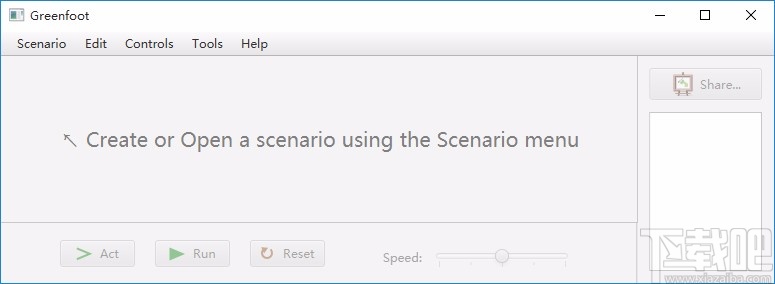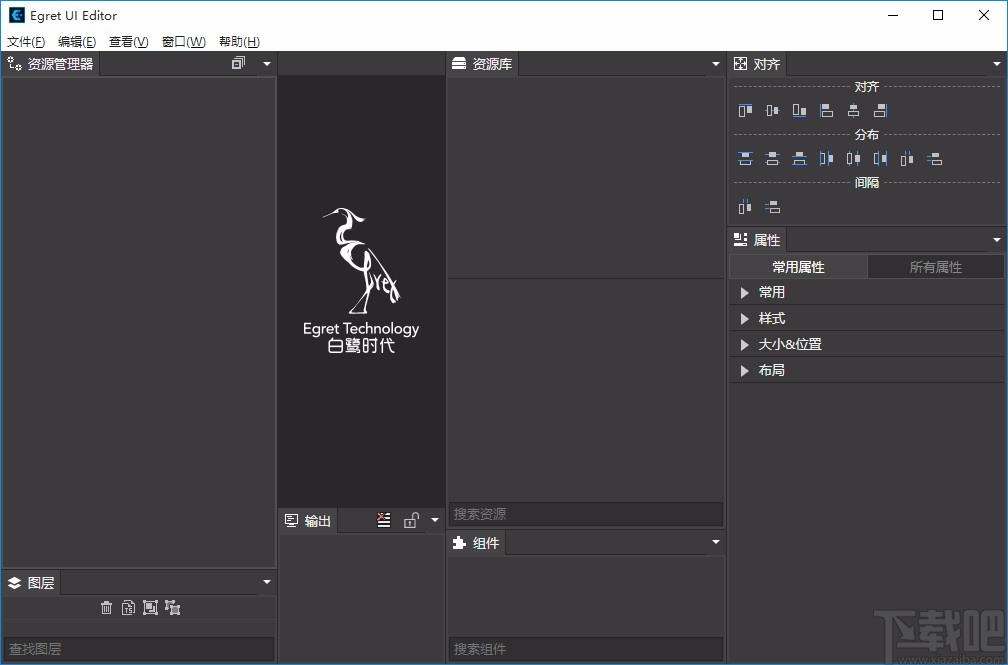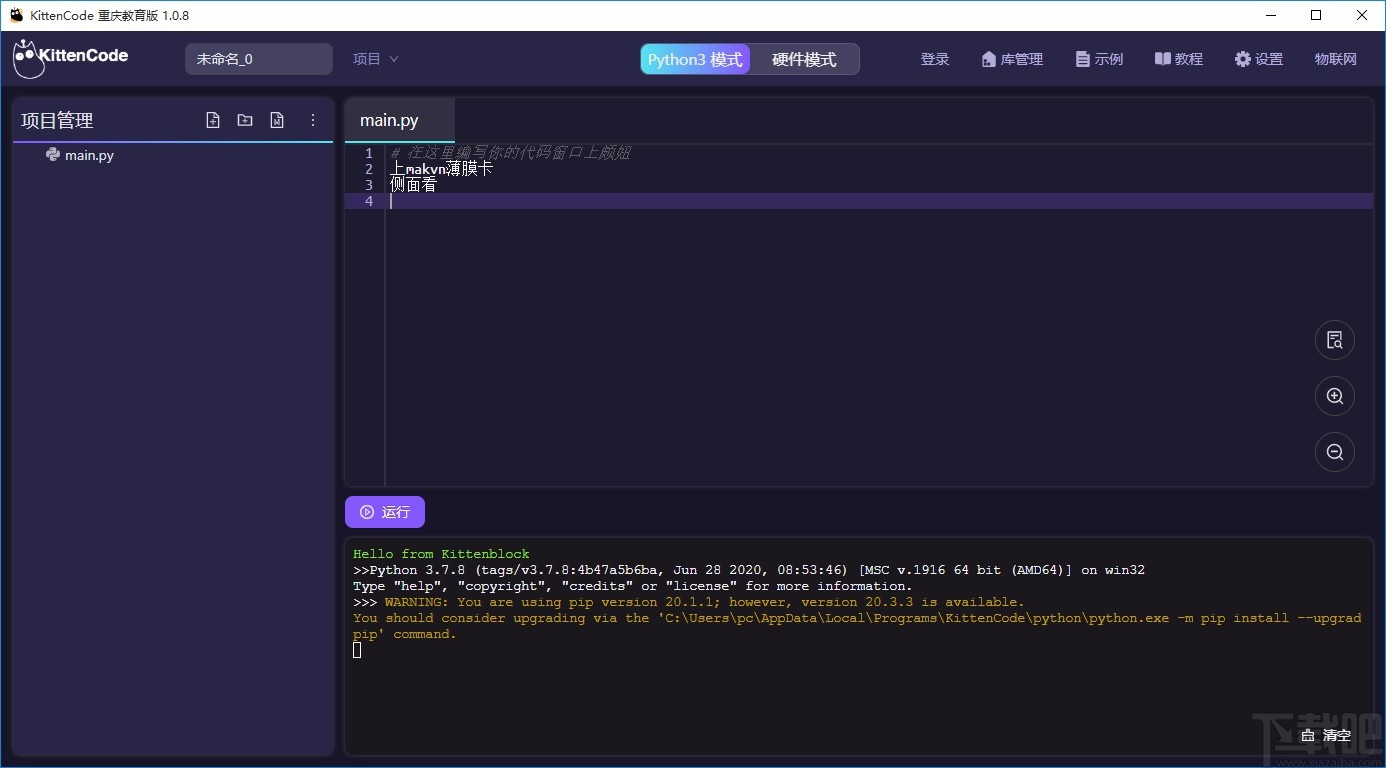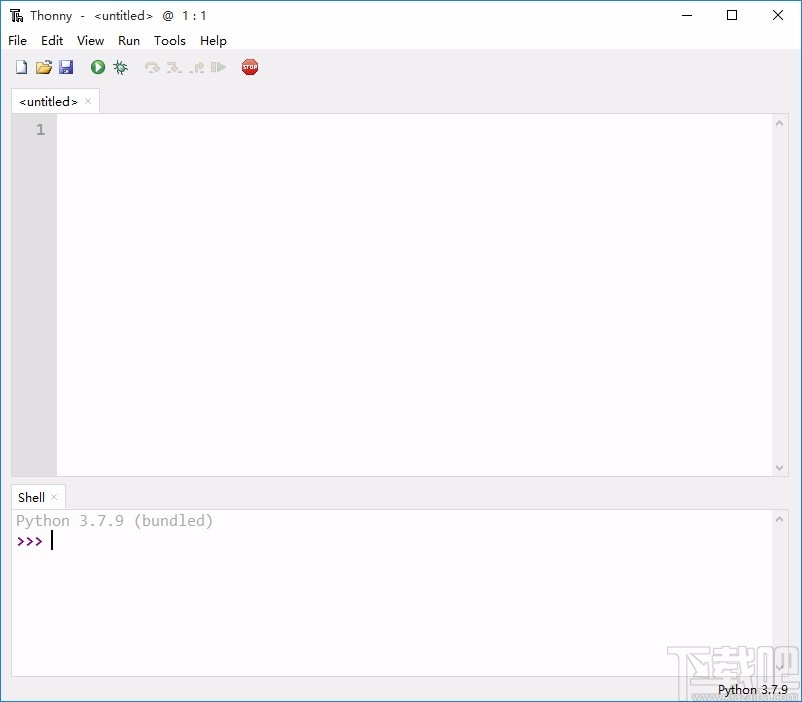Network Working Group T. Hardie
Request For Comments: 2656 Equinix
Category: EXPerimental August 1999
Registration Procedures for SOIF Template Types
Status of this Memo
This memo defines an Experimental Protocol for the Internet
community. It does not specify an Internet standard of any kind.
Discussion and suggestions for improvement are requested.
Distribution of this memo is unlimited.
Copyright Notice
Copyright (C) The Internet Society (1999). All Rights Reserved.
Abstract
The Summary Object Interchange Format [Ref. 1] was first defined by
the Harvest Project [Ref 2.] in January 1994. SOIF was derived from
a combination of the Internet Anonymous FTP Archives IETF Working
Group (IAFA) templates [Ref 3.] and the BiBTeX bibliography format
[Ref 4.]. The combination was originally noted for its advantages of
providing a convenient and intuitive way for delimiting objects
within a stream, and setting apart the URL for easy object Access or
invocation, while still preserving compatibility with IAFA templates.
SOIF uses named template types to indicate the attributes which may
be contained within a particular summary object. Within the context
of a single application, private agreement on the definition of
template types has been adequate. As SOIF objects are moved among
applications, however, the need for standard, well-specified, and
easily identifiable template types increases. This need is
particularly intense in the context of query referral, where
knowledge of an attribute"s definition and the allowed data types for
specific values is crUCial. For a discussion of this in the context
of the Common Indexing Protocol, see [Ref. 1].
The registration procedure described in this document is specific to
SOIF template types. There is ongoing work within the IETF to
specify a more generic schema registration facility[Ref. 5]. It is
not yet clear whether the results of that work will encompass the
ability to register entities like SOIF template types. If it does
so, the registration of SOIF template types may be shifted to that
method and registry. Should that occur, appropriate pointers will be
created in cooperation with the Registrar to ensure that no
registrations are lost.
1. Registrar
The initial registrar of SOIF template types will be the Internet
Assigned Numbers Authority (IANA).
2. Defining Template Types
Each SOIF object is composed of 3 fundamental components: a template
type IDENTIFIER, a URL, and zero or more ATTRIBUTE-VALUE pairs. See
[Ref 1.] for the formal grammar of SOIF and a description of how
these components interrelate. As part of the registration process,
registrants must: propose a template type IDENTIFER; list the
ATTRIBUTEs which the template may contain; identify whether each
ATTRIBUTE is mandatory or optional; and specifiy the data type and
encoding appropriate for the VALUEs associated with each ATTRIBUTE.
2.1 The template type IDENTIFIER
The IDENTIFIER for the template type is assigned at registration
based on a proposal from the registrant. It is, however, at the sole
discretion of the registrars to assign specific IDENTIFIERS. While
they will normally assign the IDENTIFIERs proposed by registrants,
they may choose to modify a proposed IDENTIFIER to avoid conflict
with other existing or proposed template types.
Because of the pre-installed base of servers using privately agreed
upon template types, applications using SOIF need to be able to
ascertain whether a referenced template type has been registered. In
order to accomplish this, all template type IDENTIFIERS for template
types registered with the IANA will begin with the ASCII string
"IANA-". An IANA-registered template type based on the GILS
specification, for example, might be registered as "IANA-GILS".
Should other registrars emerge over time, similar strings must be
established and used to compose template type IDENTIFIERS which they
assign.
2.2 The URL
The URL associated with a particular summary object is determined by
the application generating the object. Applications must generate
valid URLs according to the rules of [Ref 6.], but there is no
restriction on what sorts of URLs may be associated with particular
template types. The use of a particular template type indicates the
type of information contained in the summary object, not how the
inital resource being summarized was accessed. This ASPect of SOIF
summary objects is therefor not subject to registration.
2.3 ATTRIBUTES
Where an ATTRIBUTE associated with a proposed template type exactly
matches an ATTRIBUTE previously defined in a registered template
type, the proposed ATTRIBUTE should be defined by reference to the
existing, registered ATTRIBUTE. This allows query referral meshes to
easily map queries against ATTRIBUTEs derived from different template
types and provides an easy method for extending or restricting an
existing template type to match an application"s particular needs.
In such cases, the ATTRIBUTE for the newly registered template type
will have the same name, description, and allowed values as the
ATTRIBUTE in the existing registered template type.
Where no existing ATTRIBUTE may be referenced, registrants must
specify each ATTRIBUTE"s name, description, and allowed values.
2.3.1 ATTRIBUTE names
To handle multiple VALUEs for the same ATTRIBUTE, SOIF uses a naming
convention, appending a hyphen and a positive integer to the base
ATTRIBUTE name to create a unique ATTRIBUTE IDENTIFIER. For example,
the ATTRIBUTE IDENTIFIERs "Publisher-1", "Publisher-2", and
"Publisher-3" can be used to associate three VALUEs with the
ATTRIBUTE named "Publisher". In order to provide for the unimpeded
operation of this convention, ATTRIBUTE names may not terminate with
a hyphen followed by an integer. ATTRIBUTE names are otherwise
restricted only by the grammar defined in [Ref. 1].
In general, registrants will probably wish to propose ATTRIBUTE names
which are short, mnemonic, and intuitively associated with the
characterstic that the ATTRIBUTE describes. While these may be
generally laudable goals, it must be remembered that the application
interface need not present the raw ATTRIBUTE name to the end user;
indeed, in situations where the end user"s language does not use the
ASCII character set, the interface must map the ATTRIBUTE name to an
appropriate local representation. Since ATTRIBUTE definitions are
provided as part of the registration process, registrants should
avoid attempting to overload the ATTRIBUTE name with information
which belongs in the description.
2.3.2 ATTRIBUTE descriptions
ATTRIBUTE descriptions for ATTRIBUTEs registered with the IANA must
be in English, though mappings to other languages may be proposed as
part of the ATTRIBUTE description. ATTRIBUTE descriptions should
propose clear criteria for establishing whether an object posseses a
particular ATTRIBUTE. Descriptions should also include at least two
examples of how each attribute relates to an object being summarized,
using, where possible, objects which are broadly available to a wide
variety of audiences. If several ATTRIBUTEs within a template type
inter-relate, the descriptions of each may reference the others; care
must be taken, however, that the resulting descriptions are not
circular. Where fully realized specifications of the ATTRIBUTEs have
been created in other contexts, the salient text from those
descriptions should be quoted and appropriate references cited.
2.3.3 Required and Optional Attributes
Each ATTRIBUTE registered for a template type must be marked either
required or optional. Note that marking an ATTRIBUTE required does
not imply that it may not have a null value; it implies only that it
must appear in all templates of that registered template type.
2.4 VALUES
For each ATTRIBUTE, the registrant must specify the data format and,
if appropriate, the language, character set, and encoding. Where
possible, the registrant should include references to a precise and
openly available specification of the format. The registrant must
also specify the appropriate matching semantics for the ATTRIBUTE if
these are not strictly implied by the data format and encoding. The
registrant must also note whether null values are permitted.
3. Versioning
Creating a revision of a template type is functionally similar to
creating a new template type. A Registrant may propose as a name any
derivative allowed under the rules of section 4.1 and [Ref. 1] to the
new template type. ATTRIBUTEs retained across versions without
modification should be referenced as described in section 4.3.
Modified ATTRIBUTEs must be described as if new. A registrant may
note a relationship between a proposed template type and an existing
template type as part of the registration process. The following
three relationships are currently defined:
Successor: for proposed template types intended to replace an
existing template type.
Variant: for proposed template types whose ATTRIBUTEs are either a
superset or a subset of an existing template type.
Alternate: for proposed template types which share a large number of
ATTRIBUTEs with an existing template type but whose ATTRIBUTEs do not
form a strict superset or subset of an existing template type.
Note that there may be relationships between ATTRIBUTEs of different
template types without there being a named relationship between the
template types themselves.
4. Security
SOIF template types which are intended for applications which will
pass summary objects over the global Internet should contain
authentication ATTRIBUTEs. SOIF summary objects lacking
authentication ATTRIBUTEs must be treated as unreliable indicators of
the referenced resource"s content and should only be used where other
aspects of the environment provide sufficient security to prevent
spoofing. Given, however, that particular template types may be
intended for environments with such security, there is no requirement
that registered template types contain authentication ATTRIBUTEs.
The application developer must select or propose a template type
appropriate for the intended appliation environment; if none is
available with suitable authentication ATTRIBUTEs, the provisions of
section 4.3 make it easy for the developer to propose an extension to
an existing template type with the appropriate authentication
ATTRIBUTEs.
5. References
[1] Hardie, T., Bowman, M., Hardy, D., Schwartz, M. and D. Wessels,
"CIP Index Object Format for SOIF Objects", RFC2655, August
1999.
[2] The Harvest Information Discovery and Access System:
<URL:http://harvest.transarc.com/>.
[3] D. Beckett, IAFA Templates in Use as Internet Metadata, 4th
Int"l WWW Conference, December 1995,
<URL:http://www.hensa.ac.uk/tools/www/iafatools/>
[4] L. Lamport, LaTeX: A Document Preparation System, Addison-
Wesley, Reading, Mass., 1986.
[5] IETF Schema Registration Working Group.
<URL:http://www.ietf.org/Html.charters/wg.dir#Applications_Area>
[6] Berners-Lee, T., Masinter, L. and M. McCahill, "Uniform Resource
Locators (URL)", RFC1738, December 1994.
6. Author"s Address
Ted Hardie
Equinix
901 Marshall Street
Redwood City, CA 94063 USA
EMail: hardie@equinix.com
Appendix A.
An Example Registration Form
1. Registrant"s Name ________________________________________
2. Registrant"s Organization ________________________________
3. Registrant"s email address _______________________________
4. Registrant"s postal address ______________________________
______________________________
______________________________
______________________________
5. Registrant"s telephone number ____________________________
6. Proposed Template Type IDENTIFIER: IANA-__________________
7. If this Template Type relates to an existing Template Type
list the Template Type(s) and the relationship:
Template Type ___________________ Relationship ______________
8. For each ATTRIBUTE in this Template type, provide the
following information:
a) NAME _____________________________________________________
b) Reference Template Type __________________________________
If there is no registered Template Type which has already
specified this attribute, provide the following information:
c) ATTRIBUTE Description ____________________________________
____________________________________
____________________________________
____________________________________
____________________________________
____________________________________
____________________________________
____________________________________
____________________________________
____________________________________
____________________________________
____________________________________
____________________________________
____________________________________
d) Required [] or Optional []?
e) Data Type and ecoding for this VALUE _____________________
_____________________
_____________________
f) If a specific language and character set are expected, list
them here ___________________________________________________
g) Is a null value permitted? Yes [] No []
7. Full Copyright Statement
Copyright (C) The Internet Society (1999). All Rights Reserved.
This document and translations of it may be copied and furnished to
others, and derivative works that comment on or otherwise explain it
or assist in its implementation may be prepared, copied, published
and distributed, in whole or in part, without restriction of any
kind, provided that the above copyright notice and this paragraph are
included on all such copies and derivative works. However, this
document itself may not be modified in any way, such as by removing
the copyright notice or references to the Internet Society or other
Internet organizations, except as needed for the purpose of
developing Internet standards in which case the procedures for
copyrights defined in the Internet Standards process must be
followed, or as required to translate it into languages other than
English.
The limited permissions granted above are perpetual and will not be
revoked by the Internet Society or its successors or assigns.
This document and the information contained herein is provided on an
"AS IS" basis and THE INTERNET SOCIETY AND THE INTERNET ENGINEERING
TASK FORCE DISCLAIMS ALL WARRANTIES, EXPRESS OR IMPLIED, INCLUDING
BUT NOT LIMITED TO ANY WARRANTY THAT THE USE OF THE INFORMATION
HEREIN WILL NOT INFRINGE ANY RIGHTS OR ANY IMPLIED WARRANTIES OF
MERCHANTABILITY OR FITNESS FOR A PARTICULAR PURPOSE.
Acknowledgement
Funding for the RFCEditor function is currently provided by the
Internet Society.




